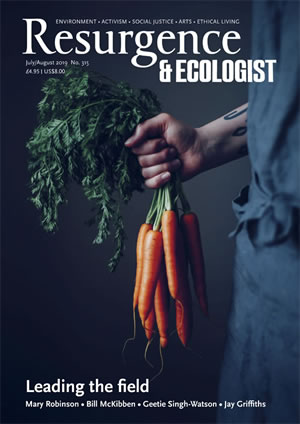For many years, a multitude of articles in Resurgence have flagged up the urgent need for a quantum change in the way we conduct our lives. And it all starts where we spend most of our time: at home. Can we minimise energy use in our flats and houses? Can we power them with renewable energy? Can we assure that the wastes we produce in our daily lives are recycled?
Few people have given plausible answers to these questions as convincingly as architect and urban planner Bill Dunster, through his London practice, ZEDfactory. ZED stands for Zero [fossil] Energy Development. ZEDlife shows, once again, that Dunster is a true pioneer. Yes, a design revolution is possible: we can live in comfortable and pleasant homes without destroying the planet. We can create buildings largely powered by sunlight. Dunster has advanced this crucial agenda more than any other person I know. He keeps on giving relevant answers to the many existential challenges we face, but sadly most policymakers and developers are still not asking the right questions.
Dunster’s best-known housing development, BedZED, in Sutton, South London, which he completed in 2002 on behalf of the Peabody Trust and Bioregional, should have triggered many similar projects. It demonstrates the possibility of efficient solar design, with minimal energy bills, abundant green space including roof gardens, a friendly, mutually supporting community, and above-market sale prices. BedZED receives a never-ending stream of visitors from around the world who want to see for themselves, yet so far it has been replicated in only a few other locations.
When BedZED was built, solar energy needed substantial subsidies because it was five times more expensive than it is today. The recently completed Zero Bills Home at the Building Research Establishment innovation park in Watford demonstrates that houses can now produce their own energy cost-effectively: “We actually don’t need fracking or nuclear… There is a unique opportunity to transform a large section of the construction industry from energy consumer to net producer.” Britain needs millions of new homes, so why not use such solar building design as a blueprint?
Dunster refuses to take no for an answer. Arguably no architect works harder and with greater ethical motivation than he does. ZEDfactory has developed zero-carbon housing into a fine art, with design and engineering going hand in hand. Dunster has spread his wings across the world – Europe, China, South Korea, the Middle East – tirelessly offering plausible design solutions to the existential challenges of climate breakdown and resource depletion. After much trial and some error, the design principles for the urban community of the future are now firmly established, based on a new philosophy of regenerative architectural and urban design.
ZEDlife, the most recent of Dunster’s publications, offers ever more technical detail. It is a treasure trove of design options: solar-integrated roof design, solar streets, electric vehicles, new building materials, and more. It is effectively a manual for creating an urban society that can live within Nature’s means by continuously drawing on Nature’s regenerative capacity. What has taken us so long to accept that this is feasible? Why did this not become mainstream years ago?
“What renewable energy means is that energy is not a once-only resource like fossil fuels but something that is renewed as fast as it is used.” Sounds quite obvious, really, but it is only the work of someone like Dunster that shows that this is now a practical, realistic, cost-effective option.
The case studies in ZEDlife are varied, detailed and full of restless, positive inspiration. It is time for the people who commission buildings and urban community projects to catch on to the necessity – and the possibility – of doing things differently. We need ZED-type projects implemented across the UK and across the world.
It is to the credit of the Royal Institute of British Architects to have published this important, beautifully illustrated book. I only hope that this great institution, with its profound worldwide influence, will now promote this agenda more vigorously, thinking beyond the architectural aesthetics that have been at the heart of its agenda for so long. As we head deeper into this century, we need ever more detailed answers to the question of how an urbanising society can exist in harmony with its host planet. ZEDlife gives more answers to this question than any other book I know. This is an essential manual for practitioners as well as policymakers, and also a valuable book for all of us who want a say about how to create a world that can last.







